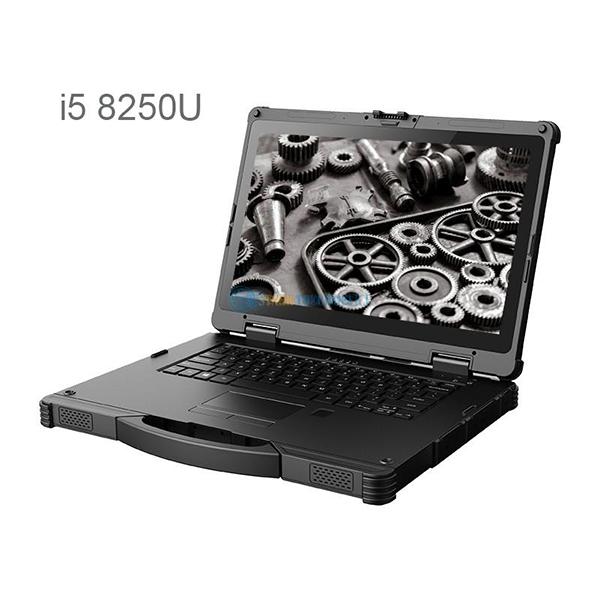Welcome STARK TOUCH DEVICE!
Solutions
Operation Specifications for Cleaning Dust on Industrial Control Computer Motherboards with Soft Brushes
Comprehensive Guide to Cleaning Industrial Computer Motherboards with Soft Brushes
Industrial computer motherboards are critical components that require regular maintenance to ensure optimal performance and longevity. Dust accumulation on these boards can lead to overheating, short circuits, and system failures. This guide provides detailed steps for safely cleaning industrial computer motherboards using soft brushes, emphasizing electrostatic discharge (ESD) protection and component-specific cleaning techniques.

Pre-Cleaning Preparation: Essential Safety Measures
Before initiating the cleaning process, prioritizing safety is paramount. Industrial computer motherboards contain sensitive electronic components vulnerable to static electricity. To mitigate ESD risks, follow these preparatory steps:
Power Disconnection: Shut down the industrial computer completely and unplug all power cables from the system. This prevents accidental electrical shocks during cleaning.
ESD Grounding: Wear an anti-static wrist strap connected to a grounded metal surface, such as a radiator or a dedicated ESD grounding point. Alternatively, touch a grounded metal object periodically to discharge any built-up static electricity.
Work Environment: Choose a clean, dry workspace with controlled humidity levels between 40-60% RH. High humidity reduces static electricity generation, while low humidity increases the risk of ESD damage.
Tool Selection: Gather soft-bristled brushes (e.g., anti-static paintbrushes or makeup brushes with natural bristles), compressed air cans with fine nozzles, and lint-free microfiber cloths. Avoid using abrasive tools or materials that could scratch delicate components.
Step-by-Step Cleaning Process: Component-Specific Techniques
The cleaning process involves meticulous attention to detail, focusing on areas prone to dust accumulation without damaging sensitive parts. Follow these structured steps:
Removing Surface Dust with Soft Brushes
Initial Dust Removal: Use a soft-bristled brush to gently sweep away loose dust from the motherboard's surface. Start from the top and work downward, paying close attention to crevices around capacitors, resistors, and integrated circuits (ICs).
Fan and Heatsink Cleaning: Industrial computers often feature robust cooling systems with large fans and heatsinks. Use the brush to dislodge dust from fan blades and heatsink fins. For stubborn dust, employ compressed air in short bursts, holding the can upright to prevent liquid propellant from escaping.
Slot and Connector Cleaning: Dust tends to accumulate in expansion slots (e.g., PCI, PCIe) and connectors (e.g., SATA, USB headers). Carefully insert the brush into these areas and rotate gently to remove debris. Avoid applying excessive force to prevent bending pins or damaging slots.
Addressing Stubborn Contaminants with Advanced Techniques
Isopropyl Alcohol Application: For oily or sticky residues, dampen a microfiber cloth with 99% isopropyl alcohol (IPA). Gently wipe affected areas, ensuring the cloth is not dripping wet. IPA evaporates quickly, leaving no residue, and is safe for most electronic components.
Contact Point Restoration: Over time, gold-plated contacts on memory modules, expansion cards, and connectors may oxidize, leading to poor electrical connections. Use a pencil eraser to lightly polish these contacts, followed by a wipe with an IPA-dampened cloth to remove eraser residue.
Thermal Paste Replacement: If cleaning involves removing heatsinks, inspect the thermal paste between the CPU/GPU and heatsink. Replace dried or cracked thermal paste with a high-quality, non-conductive compound, applying a pea-sized amount in the center of the chip.
Post-Cleaning Verification: Ensuring System Integrity
After cleaning, perform a thorough inspection to confirm that all components are undamaged and properly seated. Follow these verification steps:
Visual Inspection: Examine the motherboard for any signs of physical damage, such as cracked solder joints, bent pins, or missing components. Pay special attention to areas cleaned with alcohol or erasers.
Reassembly and Testing: Reinstall all removed components, ensuring they are securely fastened. Reconnect power cables and peripherals, then power on the industrial computer. Monitor system behavior for any abnormal noises, error messages, or performance issues.
Temperature Monitoring: Use hardware monitoring software to check component temperatures during idle and load conditions. Elevated temperatures post-cleaning may indicate improper heatsink installation or insufficient thermal paste application.
Long-Term Maintenance Strategies: Preventing Future Dust Buildup
To minimize the frequency of deep cleanings, implement these preventive measures:
Environmental Control: Position industrial computers in clean, dust-free environments away from sources of airborne debris, such as manufacturing equipment or open windows. Consider using air filters or positive pressure ventilation systems to reduce dust ingress.
Regular Dusting: Incorporate weekly or bi-weekly dusting into your maintenance routine using compressed air or a soft brush. Focus on visible dust accumulation without disassembling the system.
Component Upgrades: If dust buildup remains problematic, consider upgrading to dust-resistant components, such as sealed bearings in fans or heatsinks with enhanced dust filtration capabilities.
By following this comprehensive guide, industrial computer operators can maintain optimal system performance, extend component lifespans, and reduce the risk of costly downtime caused by dust-related failures. Remember, regular maintenance is key to ensuring the reliability and longevity of critical industrial computing infrastructure.


